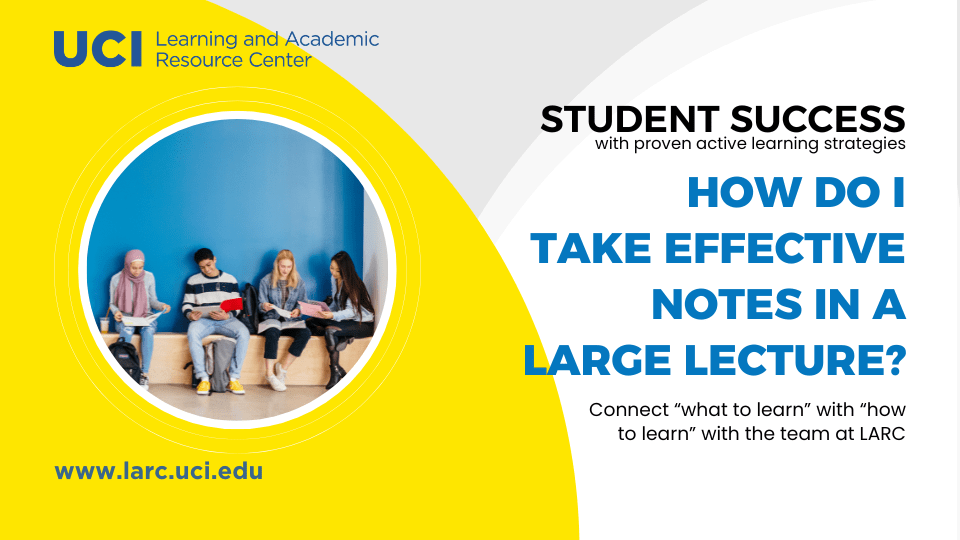While you probably have experience taking notes, it’s always worth considering new strategies to be more effective. First, consider some of these scientific facts about note-taking:
- Summarizing information in your notes boosts understanding more than taking notes verbatim (copying or transcribing word-for-word).
- While using laptops to take notes can be beneficial, they can also offer distractions that decrease academic performance.
- Taking notes by hand promotes conceptual learning. While laptop users typically take more notes because people usually type faster than they can write longhand, one study showed that those who took notes by hand actually performed better when tested on the same material. Laptop users did just as well on fact recall, but not as well on complex concepts, possibly because slower longhand writers were able to “encode,” or mentally process, more of what they heard.
- Re-reading notes is not an effective study strategy. Using flashcards, diagramming, quizzing yourself, and spacing out studying over time is much more effective.
With these facts in mind, here are some strategies you can employ to take notes and use them more effectively:
- Start with instructor slides: Many instructors will provide slides on Canvas before or after lectures. Digitally annotate or print out these slides to manually write on them. They’ll help you stay focused on listening and understanding instead of rushing to write down information already provided. Some instructors may even use “guided notes” so you can add information to make them complete while engaging in class activities.
- Prepare for lecture: Organize and clearly label your note-taking folders prior to class. Take notes on the big ideas and new vocabulary in assigned reading. Mark any questions you have about your textbook and bring those to lecture as “pre-notes” to help you identify key concepts.
- Handwrite notes: Take notes using old-school pen and paper. You can always convert handwritten notes to a digital format with app tools like Google Lens at a later time. If your device has a touchscreen, try software like OneNote to handwrite, organize, and/or convert to text. Best of both worlds!
- Stay on task: If you choose to type notes during lecture, commit to closing unrelated tabs and pausing notifications for the duration of the lecture to improve your focus. Silence your phone and put it away. If you catch yourself typing notes verbatim, try to pause and reflect to summarize the material instead to increase your understanding.
- Try a standard method: If organizing the content of your notes seems challenging, try the Cornell Method or simple outlining. The main purpose of notes is to store information for you to unpack and add to later as you learn. They don’t have to capture everything or be perfect, but if the contents are clearly labeled, they will be much more useful to you when you return to them after class.
- Compare notes afterward: Check in with a classmate or study group and do a lecture review. What were the important ideas you all heard? Did anyone catch a detail you missed? Add these missing aspects to your notes to ensure you’re covering all your bases.
- Create study tools: Condense and annotate your notes or consider creating a graphic organizer for the information that brings textbook and lecture notes together. This practice promotes deeper understanding and long-term memory and provides a memory aid you can use to quiz yourself more effectively.
Need help with effective studying and learning this year? We at LARC are here to help! Meet with one of our academic coaches one-on-one, sign up for a LARC tutorial, or check out our best learning tips.
Please don’t hesitate to contact us for additional information.

